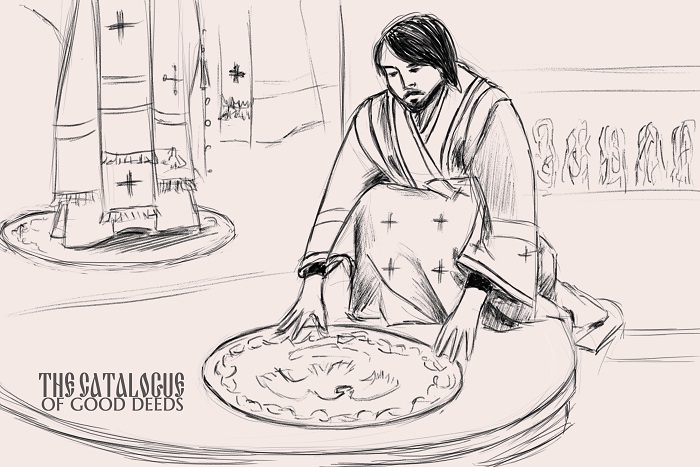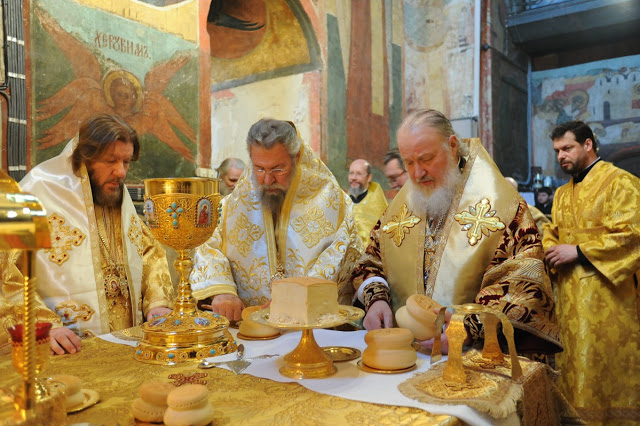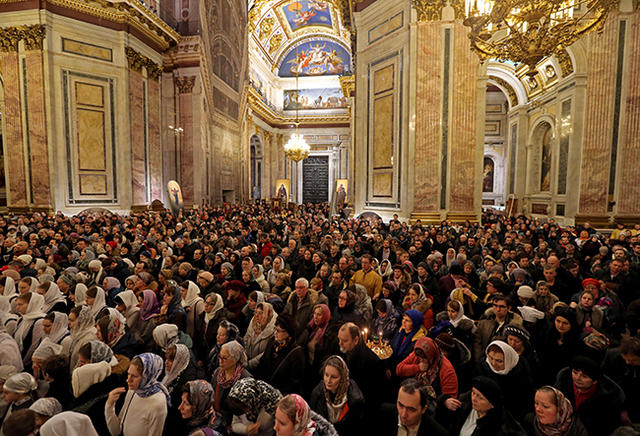
Orthodox worship is one of the richest Christian religious practices in terms of its symbolism. In addition to the liturgical texts and rituals, the tradition of Orthodoxy is also transmitted through a variety of church accessories. The overall abundance of liturgical objects in an Orthodox church may surprise new believers or those interested in Orthodoxy, but this abundance of tangible holy objects confirms the goodness of the matter God has created. God Himself assumed the human flesh, entered the world of matter and sanctified it, made it a means of communication with Himself. Let’s take a closer look at one of such liturgical items, recollect the history of its appearance in the Church, as well as try to understand the hidden meaning behind it.
What’s an eagle rug? A double-headed eagle is an ancient royal symbol and the coat of arms of the Byzantine state. This coat of arms is depicted on the royal thrones, carpets and even shoes of the Orthodox emperor. Since the 13th century, the Emperor used to confer the right to wear shoes with the royal coat of arms to the Patriarchs of Constantinople, Alexandria, and Antioch as a special honorary award. Over time, the imperial eagles began to be embroidered on special round or rectangular rugs, now called eagle rugs, on which those who had been elected as patriarchs used to stand, so as to demonstrate their Orthodox faith to the whole world. The eagle rugs were also used in other moments of worship, in particular during the initial exclamation of the bishop. Also, the bishop would stand on this mat and make his last bow before leaving the church. In some churches, the eagle rugs were laid out with mosaics or other stuff right on the floor in the middle of the nave. When the Orthodox Roman Empire collapsed under the blows of the Turks, the royal eagle was preserved by the Patriarch of Constantinople, and also became the coat of arms of the young Moscow Principality. Being an attribute of the emperors first, and then of the Patriarchs, the eagle rug eventually became an integral liturgical attribute of any Orthodox bishop. What is the hidden meaning of this liturgical object?
The Russian eagle rugs depict not a two-headed, but an ordinary eagle, which immediately brings to mind the heavenly eagle, a mysterious animal, which the Holy Apostle John the Theologian saw in his prophetic vision. This animal, together with three others, stood in the midst of and around the throne of the Lord of hosts, and they rest not day and night, saying, Holy, holy, holy, LORD God Almighty, which was, and is, and is to come (Revelation 4:8). A bishop should also, like the heavenly eagle, tirelessly glorify Christ the Savior by his works and words day and night. The eagle is a symbol of the apostle John, who wrote the most sublime and theologically-oriented Gospel, and is often depicted with a halo and in radiance, so that every bishop who stands on an eagle rug must be a theologian; the true theology is first and foremost manifested in the holiness of his life. When a bishop steps onto an eagle rug, it is a special reminder of the great, terrible, and responsible duty of the archpastor. While standing on the eagle, the bishop resembles God Himself, who sits on those animals, which is clearly seen in the icon of Christ the Lord of Hosts. A bishop is an icon of Christ in the Church and, as St. Ignatius of Antioch (†108) says, “the bishop should be viewed as the Lord himself” (Epistle to the Ephesians 6). Early believers thought that the eagle was the only bird that could look directly at the sun, and was also able to see the prey on the ground from the great height of its flight. The bishop should imitate the eagle in this respect, keep looking at Jesus Christ, the Sun of Righteousness, at all times and cleanse his heart in every possible way, for only the “pure in heart will see God” (cf. Matthew 5:8), as the Lord said. Purifying his soul in order to see God, a bishop should not be preoccupied solely with his inner life, for he is not just a monk, but is called to rule the Church and see what is going on with his flock.
The flock and the Church, which is served by the bishop, is symbolized by the embroidered city with walls on the eagle rug. In ancient times, cities were the centers of Christian life and almost each city had its own bishop’s see. A bishop, like an eagle, must soar over the city, protecting it from external enemies and internal turmoil. The city is surrounded by walls, i. e. impregnable oroses (Greek: Ὅρος – border, limit) of the Orthodox dogmas adopted at the Ecumenical Councils, these unshakable pillars of truth. Without walls, any city can fall, so the main task of the bishop is to preserve and maintain the faith entrusted to him by the apostles.
So, here’s the Christian meaning of a seemingly simple rug with the image of an eagle. It also reminds us of our past, the history of our Church, which is inextricably linked to Byzantium, to the extent that some even call the Orthodox Church “Byzantium after Byzantium”. The eagle rug shows us what a terrible and holy responsibility any bishop has to carry on his shoulders and with what reverence and respect we should treat this special service. The eagle rug also reminds the bishop Whom he should glorify day and night, to what height of sanctity he is called and how far away from this sanctity he may possibly be. In the Orthodox Church, even a simple bishop’s rug preaches Christ.



